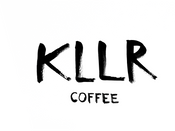Many people are surprised to learn how much work goes into dialing-in espresso and brewed coffee – and keeping it that way.
Dialing-In: Industry lingo for adjusting and controlling variables such as water quality and temperature, grind-size, water contact time, and coffee: water ratio to achieve the desired flavor profile for a particular coffee.
Even with automated equipment that can control many – or most – of these variables for us, it’s important that we not get complacent and that we stay on top of keeping our coffee tasting great and our customers coming back for more.
For baristas and operators new to the craft, wrapping one’s head around all of these variables can seem a daunting task, but it can easily be put into perspective by analogizing it to a simple concept we all learned about in high-school science: The Scientific Method.
The Oxford Dictionary defines the scientific method as follows
“a method of procedure that has characterized natural science since the 17th century, consisting in systematic observation, measurement, and experiment, and the formulation, testing, and modification of hypotheses.”
More simply stated, the scientific method is the process of making a guess about what will happen, observing what happens, and adjusting as needed.

When we are dialing in new coffees, or even a tried-and-true espresso at the beginning of the day, this is exactly what we are doing.
For example, with our KLLR Espresso blend, we recommend a starting point of:
- 18 grams of dried coffee in
- 36 grams of liquid espresso out
- 25-30 seconds shot time
When we show up to dial-in the coffee at the beginning of the day, we will probably start with the grinder and espresso machine settings wherever they were set at the end of the previous day. With thee general goal of our desired flavor-profile in mind (our hypothesis), we dose, tamp, brew, and observe.
Did the appropriate amount of espresso brew?
Did that brew occur in the appropriate amount of time?
And most importantly (and most often overlooked – sorry data-lovers): Does it taste right?
KLLR Espresso, when dialed-in well, should have a smooth, silky mouthfeel with a sweet, milk-chocolate base nuanced by notes of lemon acidity, florals, and subtle baking spice. Tasty!
When NOT dialed-in well the flavor-profile may present with sharper, sour flavors, or bitter, palate-drying astringency…. Less tasty.
So, when we have the misfortune of starting our days with the “less tasty” shots… what do we do now?
Under-Extracted
When we have failed to pull the appropriate quantities of flavor compounds out of the ground coffee, the resulting beverage will taste “under-extracted.” At a basic level this means the resulting brew will be thin, sour, and/or salty.
To correct this, we will likely want to either use more brew-water, enabling it to do more work to extract from the ground coffee, or grind the coffee finer, providing more surface area for the water to dissolve from and also leading to a longer contact-time between the coffee and the water (to continue with our KLLR Espresso example, assuming you’ve got the ratio right, the latter will be the way to go probably every time).

Pro-Tip: Only adjust ONE variable of your coffee at a time. Say you decide to adjust your grind finer, but you also suspect that you may need to adjust water volume, pre-infusion, or some other variable – have patience. When adjusting more than one variable at a time, whether the resulting brew is better or worse, you won’t know exactly what led to the changes you are tasting.
Over-Extracted
When we have removed a greater quantity of material from our ground coffee than intended, the resulting brew will be “over-extracted,” presenting with bitter, astringent, or harsh/woody flavors. To correct this, we will typically want to grind more coarsely, reducing the surface area of ground coffee and decreasing the contact time between the coffee and water.

Mnemonic Assistance
An easy way to remember which way to adjust your grinder is to use the analogy of a large funnel filled with either boulders or sand. When the funnel is filled with large boulders they would pack together very loosely. If we were to dump a bucket of water over the top of them, the water would quickly gush through. Now imagine we replaced those boulders with fine particles of sand, tightly packed together. The water from the same bucket would trickle through much more slowly, fighting to push its way through the limited space between particles of sand.
This is essentially the same thing we will see from our coffee or espresso.
Over-extracted = too slow of a flow-rate = grind more coarsely (toward the boulders).
Under-extracted = too rapid a flow-rate = grind more finely (toward the sand).
There are, of course, a variety of factors affecting the flavor of your brews: the freshness of your coffee, the equipment you are using, the quality of your water, and more. That said, by keeping things simple – and scientific – more often than not we can unlock the best potential flavors of our beans.
Our hypothesis: using these tips will help new baristas brew tasting coffee more easily whether behind the bar, or in their home-kitchens.

